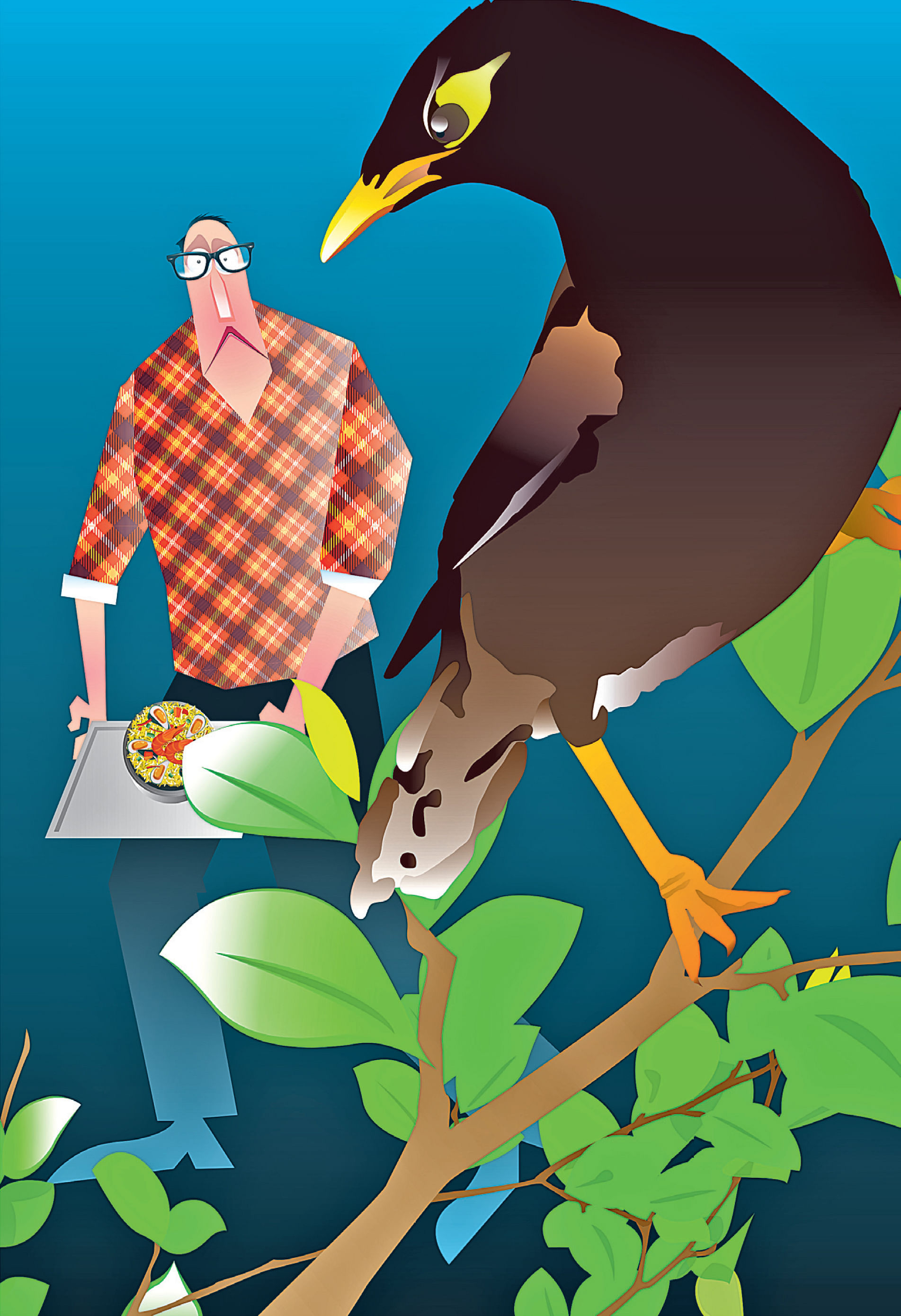You put your plate of food on the table and - not aware of the danger - head to another stall to buy a drink.
Bad move. The "enemy" lands on your plate and makes off swiftly with a tasty morsel.
You curse under your breath, but it is too late. The nasty mynah, sometimes a crow, has struck again.
This has happened to me over the years in Marine Parade, Chai Chee, Toa Payoh, West Coast and Bedok.
When they are not stealing my food, the birds are scavenging among the unattended plates on nearby tables after the customers have left.
Meanwhile, pigeons scamper nonchalantly beneath the tables, dodging customers' legs expertly as they pick food off the floor.
The sight is enough to put you off your lunch or dinner.

In some hawker centres and coffee shops, droppings stain the tables and chairs, defying cleaners' attempts to erase the disgusting evidence.
Go on the Internet and you will find many others grousing about this problem that surely demands the authorities to come up with better hawker centre designs to stamp out the nuisance.
You cannot blame the birds, which are only obeying their instincts and taking advantage of the easy availability of food scraps.
There are, of course, cleaners at hawker centres, but there is not a big army of them and they can never clear the tables fast enough. Many of them are old too.
The question then is: Why must Singaporeans depend entirely on these cleaners and not clear their plates in the first place?
Many do not because someone else is paid to do the job. Moreover, they do not see any other diner doing it either, so they do not feel any moral or societal pressure to do so.
And for those who will do it, where are they going to deposit their plates, glasses and cutlery?
Sure, there are tray-return stations, but these get filled up quickly - or, worse, are limited in number and can be hard to locate.
When you spot one, the station is, more often than not, packed. Like the tables, they are not cleared quickly. And the clever birds know this. They congregate at this source of rich pickings as well.
I suppose one solution is to locate these stations in a place inaccessible to birds and have someone dedicated to clearing the stations as the trays come in.
But how do you get as many people as possible to return the trays? Money talks. Why not collect a deposit of, say, $2, even $5, from the customer every time he takes a tray from the hawker stall?
The customer gets the deposit back when he returns the tray at the station.
It is not exactly a new idea as the system has reportedly been used in a foodcourt in Ayer Rajah and Yishun Park Hawker Centre has installed an automated tray-return system too.
This is a worthwhile idea for the National Environment Agency - which manages and regulates 107 markets and hawker centres in Singapore - to adopt islandwide as it helps to promote a gracious society in which people are responsible for their actions and do not expect others to pick up after them.
Then, the tables will be cleared much faster and peak-hour dining will certainly be a better experience.
But, still, something must be done about the birds.
The design of the hawker centre is certainly critical to taking away the welcome mat from them.
In Marine Parade, I notice that the ceiling beams in the hawker centre have been studded with sharp points so that the birds cannot rest on them.
But can the hawker centres also use a blind-like curtain that keeps the birds out, yet allows air and light to get in?
While it may be expensive to install air-conditioners - something which some Singaporeans have proposed - other viable design alternatives need to be considered.
Come to think of it, in a country where architecturally adventurous buildings constantly pop up and new Housing Board estates tout the latest in environment-friendly and car-light features, the hawker centre doesn't seem to have changed much.
This despite its major role in the community as arguably the most patronised facility - given that it is often paired with a wet market too.
The continuing conversation about how to promote cooking as a fulfilling livelihood is not complete without also considering other aspects beyond preserving heritage dishes, keeping rental rates low to keep prices affordable and making the job more palatable to a younger generation.
For now, as Singaporeans shy away from returning their trays and the birds get unfettered access to hawker centres, the reputation of the country as a food paradise gets soiled every day.


